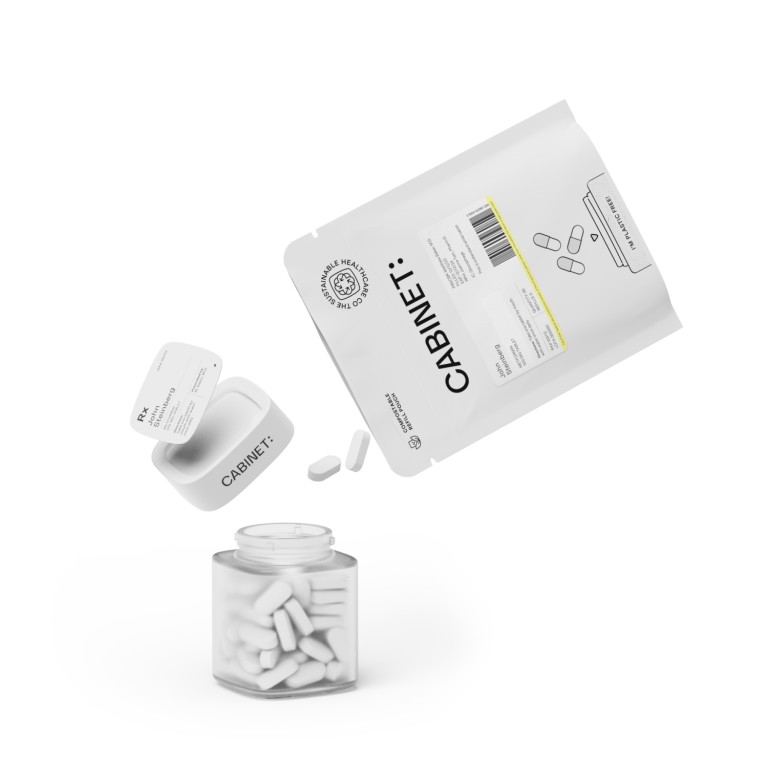Escitalopram is a popular medication used for treating various mental health conditions. Understanding how long it takes for escitalopram to work can be important for patients seeking relief from their symptoms. In this article, we will explore the mechanism of action of escitalopram and discuss factors that can influence its effectiveness. We will also delve into the expected timeline for escitalopram to take effect and outline the potential side effects and risks associated with its use.
Understanding Escitalopram
What is Escitalopram?
Escitalopram is an antidepressant medication belonging to the selective serotonin reuptake inhibitor (SSRI) class. It is commonly prescribed for the treatment of major depressive disorder, generalized anxiety disorder, social anxiety disorder, and panic disorder. By increasing the levels of serotonin, a neurotransmitter that regulates mood, in the brain, escitalopram helps alleviate symptoms of these mental health conditions.
Escitalopram is a derivative of citalopram, another SSRI medication. It is the S-enantiomer of citalopram, which means it is the mirror image of the molecule. This enantiomeric specificity is believed to contribute to the increased efficacy and tolerability of escitalopram compared to citalopram.
When ingested, escitalopram is rapidly absorbed in the gastrointestinal tract and reaches peak plasma concentrations within 4 hours. It is primarily metabolized in the liver by the enzyme cytochrome P450 2C19, with a half-life of approximately 27-32 hours. The metabolites are then eliminated through renal excretion.
The Role of Escitalopram in Treating Mental Health Conditions
Escitalopram has been proven to be effective in relieving symptoms of depression and anxiety. It works by blocking the reuptake of serotonin in the brain, thereby increasing the amount of serotonin available for neurotransmission. This helps improve mood, reduce anxiety, and restore a sense of well-being.
The precise mechanism of action of escitalopram is not fully understood, but it is believed to involve the modulation of serotonin receptors in the brain. By enhancing serotonin signaling, escitalopram promotes neuroplasticity and neurogenesis, which are important processes for maintaining mental health.
Recent data shows that escitalopram can also be helpful in treating other mental health conditions, such as obsessive-compulsive disorder (OCD) and post-traumatic stress disorder (PTSD). In OCD, escitalopram helps reduce intrusive thoughts and compulsive behaviors, while in PTSD, it assists in alleviating symptoms of hyperarousal and re-experiencing traumatic events.
It is important to note that the effects of escitalopram may vary from person to person, and individual response to the medication can differ. Factors such as genetic variations, concurrent medications, and underlying medical conditions can influence how a person metabolizes and responds to escitalopram.
Escitalopram is typically prescribed at a starting dose of 10 mg per day, which can be adjusted based on individual response and tolerability. It is generally well-tolerated, with common side effects including nausea, headache, insomnia, and sexual dysfunction. However, like any medication, escitalopram can have rare but serious side effects, such as serotonin syndrome or suicidal thoughts, which require immediate medical attention if experienced.
In conclusion, escitalopram is an important medication in the treatment of various mental health conditions. Its ability to increase serotonin levels in the brain contributes to its efficacy in relieving symptoms of depression, anxiety, OCD, and PTSD. However, it is crucial to work closely with a healthcare professional to determine the appropriate dosage and monitor for any potential side effects or interactions with other medications.
The Mechanism of Escitalopram
How Escitalopram Affects the Brain
Escitalopram works by selectively inhibiting the reuptake of serotonin, which allows for more serotonin to be available in the synaptic cleft. This increased availability of serotonin helps improve mood and alleviate symptoms of depression and anxiety.
On the other hand, it is also believed that the effects of escitalopram may involve desensitization of postsynaptic serotonin receptors over time, leading to adaptive changes that further contribute to its therapeutic effects.
The Process of Absorption and Metabolism
After oral administration, escitalopram is rapidly absorbed into the bloodstream. It reaches peak plasma concentrations within 4-8 hours. The medication is primarily metabolized by the liver, specifically through the cytochrome P450 system, and excreted mainly through urine.
Individual differences in liver function and variations in the metabolism of escitalopram may influence the effectiveness of the medication. Genetic factors can also play a role in the metabolism of escitalopram, contributing to differences in response among individuals.
Factors Influencing the Effectiveness of Escitalopram
Dosage and Frequency
The dosage and frequency of escitalopram can significantly impact its effectiveness. The initial recommended dose for most adults is 10 mg per day, which may be increased to 20 mg per day if necessary, under the guidance of a healthcare professional. It is important to adhere to the prescribed dosage and take escitalopram regularly as directed.
Individual Biological Factors
Individual variations in biological factors can affect the response to escitalopram. Factors such as age, weight, liver function, and concurrent medical conditions can influence the speed at which escitalopram takes effect and its overall efficacy.
For example, older adults may require lower initial doses due to age-related changes in drug metabolism, whereas individuals with liver impairment may have slower clearance of escitalopram, potentially leading to higher concentrations of the drug in their bodies.
The Impact of Concurrent Medications
It is important to consider other medications and substances a person may be taking concurrently, as they can interact with escitalopram and affect its effectiveness. Certain medications, such as monoamine oxidase inhibitors (MAOIs) and some over-the-counter drugs, can interact negatively with escitalopram and should be avoided.
Furthermore, substances like alcohol and illicit drugs can also interfere with the action of escitalopram, reducing its efficacy in managing mental health conditions.
Expected Timeline for Escitalopram to Take Effect
Initial Response to Escitalopram
Patients may begin to notice a reduction in their symptoms within the first few weeks of starting escitalopram. However, it is important to be patient, as it can take up to 4-6 weeks for the full therapeutic effects to become apparent.
This may be because escitalopram needs time to reach therapeutic levels in the bloodstream and for the brain to adapt to the increased levels of serotonin. It is crucial to continue taking escitalopram as prescribed during this period, even if immediate relief is not experienced.
Long-term Effects and Efficacy
For many individuals, escitalopram remains an effective long-term treatment for managing symptoms of depression and anxiety. However, the effectiveness of escitalopram can vary among individuals, and some may require dose adjustments or alternative treatments if they do not experience the desired response.
It is important to regularly communicate with healthcare professionals and discuss any concerns or changes in symptoms to ensure the right treatment approach is maintained.
Potential Side Effects and Risks
Common Side Effects of Escitalopram
While escitalopram is generally well-tolerated, it is not without potential side effects. Common side effects may include nausea, insomnia, drowsiness, dizziness, and headache. These side effects are usually mild and transient, and they often subside as the body adjusts to the medication.
Serious Risks and Warnings
Despite the overall safety profile of escitalopram, there are certain risks and warnings associated with its use. In rare cases, escitalopram may increase the risk of suicidal thoughts or behaviors, particularly in children, adolescents, and young adults. It is important to closely monitor individuals starting escitalopram for any changes in mood or behavior and seek immediate medical attention in case of worsening symptoms.
Other potential risks and warnings include serotonin syndrome, hyponatremia, and discontinuation syndrome. It is crucial for healthcare professionals to carefully evaluate the risk-benefit ratio for each individual considering escitalopram treatment, taking into account their medical history and current condition.
In conclusion, the timeline for escitalopram to take effect can vary from individual to individual. Understanding the mechanism of action of escitalopram, the factors influencing its effectiveness, and the potential side effects and risks is crucial for patients seeking relief from their mental health symptoms. By working closely with healthcare professionals, individuals can optimize the use of escitalopram and effectively manage their condition. Remember, patience and open communication are key in the journey towards improved mental well-being.









